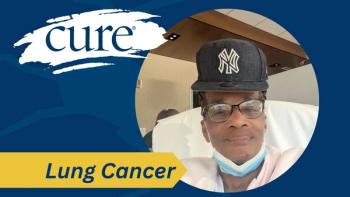
Experiencing a Breast Cancer Diagnosis After a Benign Tumor
A complex fibroadenoma, even if it does not become cancerous, can correlate with a family history of breast cancer and an increased risk for cancer. Seeking more information from your doctors about how to proceed can offer peace of mind.
A lump in the breast! It can be daunting, even if it turns out to be benign. A fibroadenoma, for example, is a lump of glandular and connective tissue with little or no risk of becoming cancerous. I was first diagnosed with a fibroadenoma after a manual exam of a lump that grew larger through my 20s. When I was young, I did not worry about it, even with a family history of breast cancer.
Because my tumor seemed to pinch a nerve, it was always on my mind, but I learned to coexist with it until my 30s. Then, as my mother was diagnosed with breast cancer, I sought an ultrasound for a more definitive diagnosis of the tumor. Following that, there was a simple fine-needle aspiration biopsy, which revealed no cancer cells.
In my 40s, I began to read more about fibroademas. I started to worry. Although I could acknowledge that my complex fibroadenoma was not breast cancer, and would never be, I could also see that there were mixed messages in the literature. Sometimes the aberrations of a complex fibroadenoma, its epithelial components, are worrisome. My fibroadenoma was "complex." I was confused.
After discussing the issue with a doctor, I had my benign tumor surgically removed. I would like to say that the removal of this tumor made me lose my worries about developing breast cancer. It did not. Removing the tumor, I was assured, did not remove my risk for breast cancer. At the same time, not feeling the pressure of the tumor, I felt released from a palpable signal that my breasts were problematic. It was a nice reprieve while it lasted.
While I did know that my dense breast tissue was also problematic, even minus the benign tumor, I assumed that lifestyle choices would reduce the risk of breast cancer. That was not to be the case. When I was diagnosed with breast cancer in my 50s, with multiple tumors in the same breast that had earlier nurtured the benign tumor, I did not associate my cancer with this tumor. At the same time, I knew that cancer does not pop up overnight.
Could the benign tumor years earlier have held clues to a medical marvel? I wondered. Until diagnosis, I lived with an invisible cancer, which never revealed a palpable lump of the sort the benign tumor did. I lived with the cancer long enough for it to become invasive, despite regular mammograms. As happy as I was that it was found when it was, I was curious to know if mutations might have been found earlier at the time the fibroadenoma was being scrutinized.
In recent years, studies have looked at some relationships between HER2-positive cancer and benign tumors with hopes that results will help us understand cancer more. In the future, how will knowing if somebody has a "driver" gene, such as HER2, present alongside benign conditions affect information pathologists and doctors share with us before cancer is invasive? It is an interesting question that researchers continue to ponder. I continue to ponder it, too.
Cancer is complicated. It involves both nature and nurture. It is a dance between genes and lifestyle choices. It is both a medical reality and sheer bad luck. In my case, a mutation in the HER2 protein helped "drive" my cancer, whatever other genetics were at play, off a cliff. When did that mutation decide to go rogue?
It does not entirely matter when. I cannot go back in time and avoid breast cancer. I can only move forward, happy to be surviving thanks to medical advances. I do hope that future generations will benefit from even more scientific advances that identify breast cancer long before it becomes invasive.
Learn more about the difference between fibroadenomas of the breast and breast cancer:




